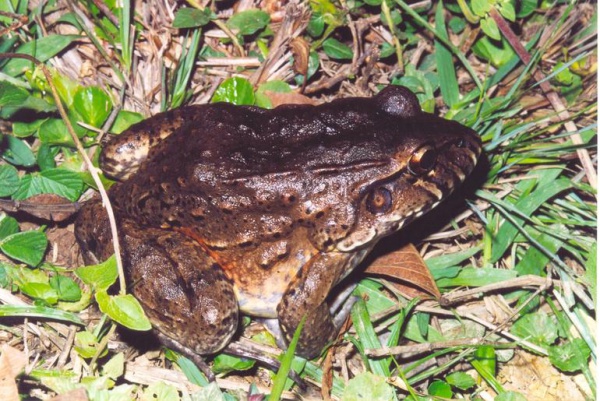Facts About Labyrinth Frog
Leptodactylus labyrinthicus, commonly known as the labyrinth frog, pepper frog, South American pepper frog, or pepper foam frog, is a captivating species belonging to the Leptodactylidae family. These frogs can be found in central and southeastern Brazil, northeastern Argentina, and eastern Paraguay. Their name derives from the intricate, labyrinth-like patterns on their bellies. These frogs are quite large, with males ranging from 117 to 188 mm and females from 124 to 166 mm in snout-vent length. Their tadpoles possess a dark gray back and tail, aiding in their camouflage.
These frogs inhabit the Cerrado and Caatinga regions, thriving at altitudes up to 1,000 meters above sea level. They are highly adaptable and can tolerate a variety of environments, including polluted ones, which led the IUCN to classify them as a species of least concern in 2008. As generalist predators, their diet is diverse, encompassing invertebrates, amphibians, lizards, snakes, rodents, and even bats.
Regarding reproduction, Leptodactylus labyrinthicus lays its eggs in foam nests. These nests are typically found in burrows on dry land or moist soil near water bodies. The male frog usually excavates or selects a burrow for use during the breeding season. The tadpoles hatch and feed on their mother's trophic eggs, remaining in the nest for up to 25 days before relocating to still water to complete their metamorphosis. This early developmental period is crucial for optimizing the consumption of eggs and tadpoles from other frog species. The tadpoles are primarily nocturnal, seeking shelter during the day to avoid predators.
Humans have also found various applications for these frogs. In Venezuela, they are consumed as a food source, and there have been attempts, albeit unsuccessful, to farm them commercially in Brazil. Interestingly, the skin secretions of Leptodactylus labyrinthicus contain an antimicrobial peptide called pentadactylin, which has been investigated for potential applications in chemotherapy.

 Brazil
Brazil